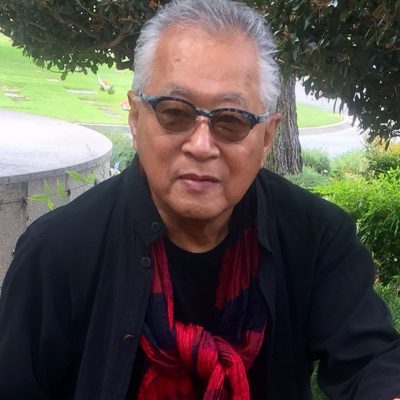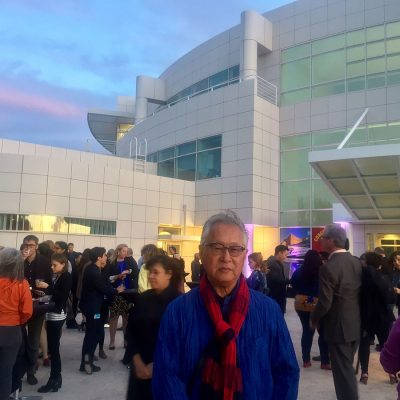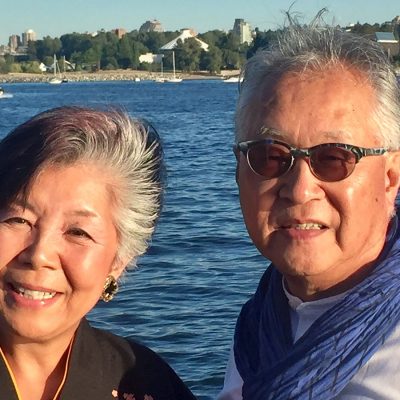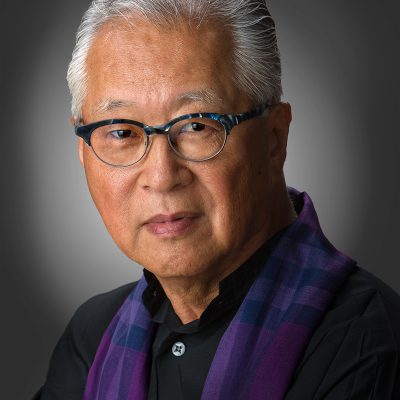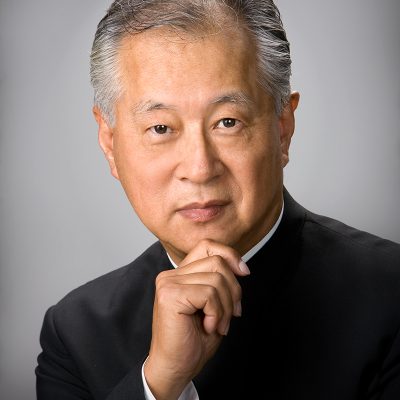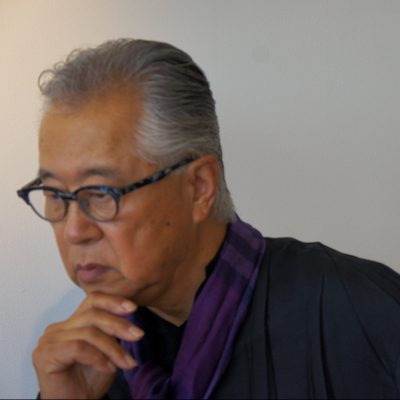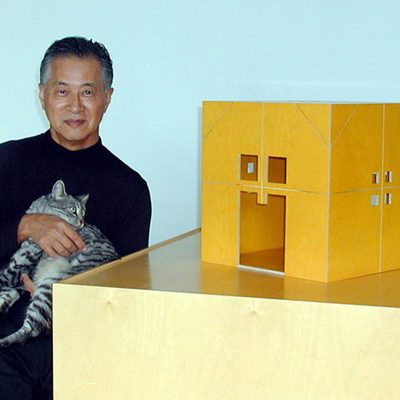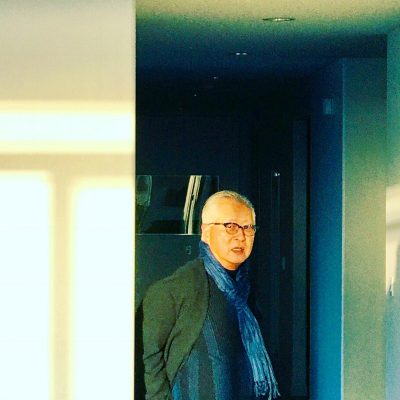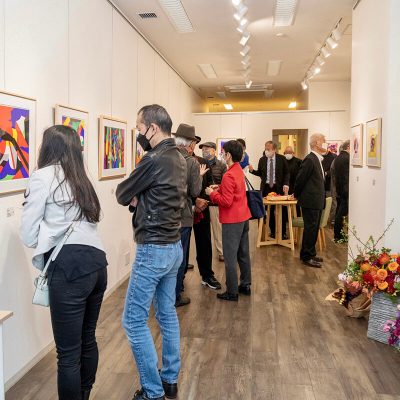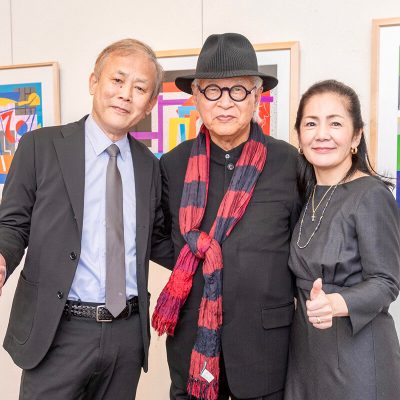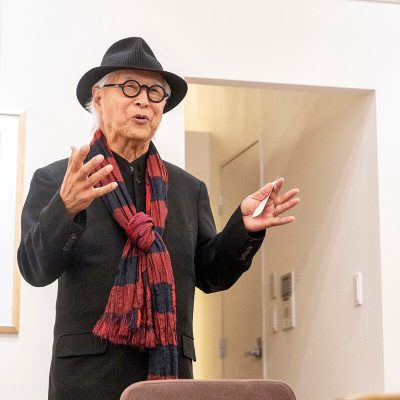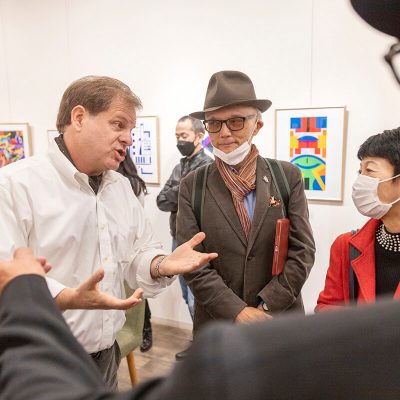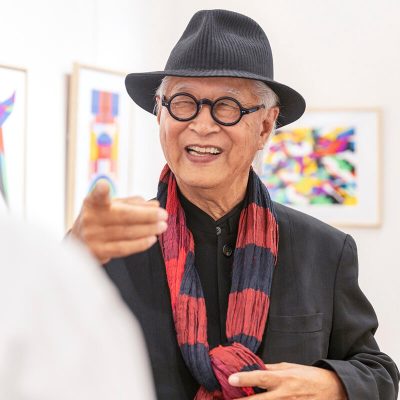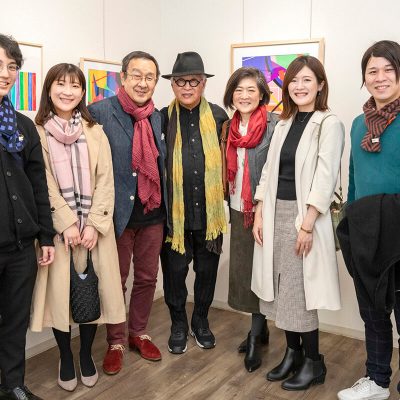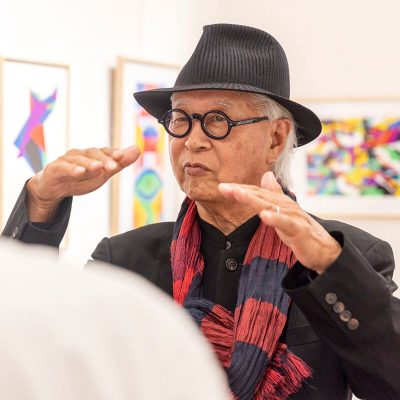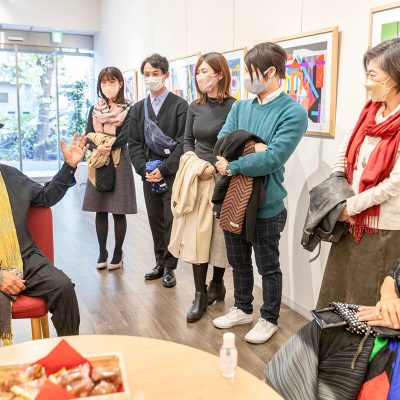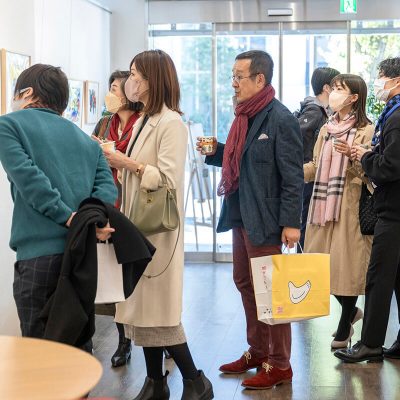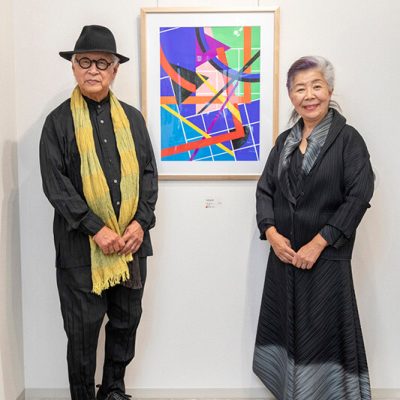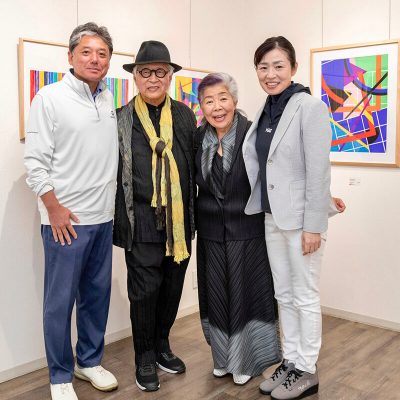BIOGRAPHY / 履歴
Over the past 35 years, Ted Tokio Tanaka, FAIA, has made significant contributions to the cultivation of Greater Los Angeles urban landscapes. Tanaka’s architecture reflects his commitment to the creation of innovative space that asserts clarity, simplicity, and elegance. From intimate residential projects to high-profiled public projects, Tanaka’s signature buildings are marked by a poetic arrangement of clear geometric forms, the abundance of natural light, open space, and the subtle fusion of Eastern and Western architectural traditions. His design excellence has received national and international recognitions, acknowledged through numerous awards, publications, lectures, and exhibitions of his work.
Tanaka attributes much of his artistry to unique circumstances of his upbringing. Growing up in post-World War II Japan, Tanaka moved to Phoenix, Arizona, with his family at the age of 16. Amidst the struggle to assimilate to a new way of life in the U.S., he developed keen interests in the world of visual art, dreaming of pursuing his career as a painter. He was particularly drawn to the stark and orderly beauty of abstract paintings by Piet Mondrian. Mondrian’s ingenious pictorial space composed entirely of straight lines, primary colors, and monochromatic tones offered a new possibility of visual expression for Tanaka. His creative vision was further nurtured by his encounter with the architecture of Frank Lloyd Wright, whose radical experiment with strict geometry and organic structure cast a lasting influence upon Tanaka’s artistic sensibility. After the tragic loss of his father, Tanaka began to appreciate the need of practicality in life, and eventually he found the perfect union of art and pragmatism in architecture. Upon receiving his Bachelor of Architecture degree from Arizona State University at Tempe, he moved to Los Angeles to pursue his career, working at highly established architectural firms. The rich visual texture of Southern California was an important influence for him: the sunlight, the open land, seascapes, and wide blue sky played a significant role in refining his artistic direction. In 1974, he established his own architectural firm in Venice, California.
While acknowledging his close affinity to the organic architecture of Wright and the modernist architecture of Le Corbusier, Tanaka actively incorporates the architectural tradition of his native Japan in his works. In his lectures, he frequently speaks of his admiration of the Katsura Villa, especially its profound simplicity, the remarkable sense of tranquility, and the elegance of interior space generated by straight lines and planes. Moreover, as seen in the Katsura Villa, traditional Japanese architecture fully considers the natural landscape that surrounds a building and absorbs it as an integral part of the architectural space. Tanaka explains that he intuitively understands the sense of space inherent in Japanese sensibility, and that his strength as a designer lies in his ability to fuse the great architectural traditions of East and West into a unique hybrid language.
Tanaka’s passion for visual art and his own sense of pragmatism are combined together to constitute the foundation of his design principle. “I am an architect and I consider myself a problem solver…as I solve problems in terms of function, I like to make things as beautiful as possible, and that is my philosophy,” Tanaka states. His conscious effort to seamlessly merge the beautiful and the functional is evident throughout the repertoire of his architectural works. As a Principal Designer of every project he undertakes, he stresses the importance of working collaboratively with his clients in order to understand their needs, requirements, challenges, and aspirations. He brings maximum resources available within the parameter set by the clients, and distills them into a geometric statement of stunning sophistication.
While emphasizing the efficiency, functionality, and comfort in his design, Tanaka often challenges the conventional concepts of architecture by highlighting sculptural elements of his works. Banning’s Landing Community Center in Wilmington, CA, exemplifies such bold experiments by the architect. This waterfront building is composed of asymmetrical, angular geometric shapes inspired by the large freighters and container ships that dominate the surrounding harbor. The strong diagonal layout is sharply contrasted by the gentle curve of the main hall, giving additional layer of visual interest to the overall composition. Banning’s Landing Community Center not only provides a comfortable gathering place for the local community members but also functions as a memorable landmark symbolizing the history and culture of the Port of Los Angeles.
Furthermore, Tanaka perceives himself as a “story-teller” who incorporates layers of complex meanings into his design. For the LAX Gateway Project, he designed a pathway of multi-color glass pylons derived directly from the cultural topography of the city of Los Angeles. Tanaka explains that his pylon monument conveys “a story about aviation, about the city of Los Angeles, about the culture here”. The ascending pylons, ranging in height from 25 to 100 feet, march down Century Boulevard to render the flight pattern of an airplane taking off into the open sky above the city. The dynamic verticality of the magnificent columns generates the serenity of ancient temples. At the end of the procession of the ascending columns, 15 100-foot-high pylons form a large circle, recalling the formation of the mysterious Stonehenge. While evoking archetypes of transformational spaces from the ancient past, the LAX Gateway monument reveals its Hollywood-inspired “glitzy” side at night, when the bright light of ever-changing colors illuminate the soaring glass columns. Made possible by the cutting-edge lighting technology that gives off 300 different colors within the duration of three hours, the multi-colored lights represent the richness of multi-cultural traditions that characterize the city of Los Angeles.
Tanaka has designed countless public, private, commercial and residential projects in Greater Los Angeles region as well as abroad. His urban planning and design projects to date include: Los Angeles International Airport Beautification Enhancements Projects; Urban Design and Final Station Design of the Little Tokyo / Arts District Redline Subway and Light Rail Stations for the Los Angeles County Metropolitan Transportation Authority’s Eastside Extension Project ; numerous Campus-wide Beautification Projects for Los Angeles Community Colleges District; Champaign Apartment Tower for the Irvine Company; Banning’s Landing Community Center for the Port of Los Angeles; Trowbridge Town Center in England; Shirane Kogen Ski Resort in Japan; and numerous award-winning residential housings in Southern California as well as in Japan. In 1994, the American Institute of Architects honored Tanaka by electing him to the College of Fellows for his outstanding work in the area of Design Category , the highest award given by the professional organization.
テッド・トキオ・タナカ 履歴
30 年以上にわたって、テッド・トキオ・タナカ、FAIA(米国建築家協会特別会員)は、ロサ ンゼルス大都市圏の都市景観を洗練するために、多大な貢献を行なって来た。タナカの建築 は、明快さ、シンプルさ、優雅さを主張する革新的な空間を生み出す彼の方針を反映してい る。個人住宅プロジェクトから、公衆の関心を集める公共プロジェクトまで、タナカが設計 した建物は、明快な幾何学的形状の詩的な配列、豊かな自然光、オープンスペース、東洋建 築と西洋建築の伝統の微妙な融合が特徴となっている。彼の優れた設計は、数多くの受賞、 出版物、講演、作品展を通して認められ、全米において、そして国際的にも評価されている。
タナカは、彼の芸術性は大いにそのユニークな生い立ち環境にある、と考えている。第二次 世界大戦後の日本で育ったタナカは、16 歳の時に家族と共にアリゾナ州フェニックスに移住 した。米国での新しい生活に順応しようと苦闘している状況の中で、彼はビジュアル・アー トの世界への強烈な関心を募らせ、画家となることを夢見るようになった。特に彼は、ピエ ト・モンドリアンの抽象絵画の極めて簡素で秩序だった美しさに引かれた。モンドリアンの 完全に直線と原色、モノトーンで構成された独創的な絵画空間は、視覚的表現の新しい可能 性をタナカに示唆した。彼の創造的なビジョンは、フランク・ロイド・ライトの建築との出 会いによって、更に育成されていった。ライトの厳格な幾何学構成に有機的構成を組み合わ せた革新的な試みは、タナカのアーティストとしての感覚に影響を与え続けている。父親の 死去という不幸に見舞われた後、タナカは生活における実用性の必要を尊重し始めるように なり、やがて建築の中に芸術と実用主義の完璧な結合を見い出したのである。アリゾナ州立 大学で建築学士の学位を取得すると同時に彼はロサンゼルスに移り、そこで確かな実績の大 手設計事務所で働きながら、キャリアを積んでいった。南カリフォルニアの視覚的豊かさは、 彼に有意義な影響を与えた:太陽光、広々とした土地、海の景色、大きな青空は、彼の芸術 的方向性を洗練するのに大きな役割を果たした。1974 年、彼はカリフォルニア州ベニスにて、 自身の建築設計事務所を設立した。
ライトの有機的建築とル・コルビジェのモダニズム建築に対する親近感を認識する一方で、 タナカは彼の生まれ故郷である日本の建築的伝統を彼の作品に積極的に組み入れている。彼 の講演において、彼は頻繁に桂離宮を賞賛している。特にその深遠なシンプルさ、素晴らし い静謐さ、直線と平面からなる屋内空間の優雅さの魅力を述べている。また桂離宮に見られ るように、伝統的日本建築は、建物を取り巻く自然環境を全て考慮に入れ、それを全体的な 建築空間の一部と見なしている。タナカは、日本的情緒における固有の空間感覚を直観的に 理解していると、そして彼のデザイナーとしての強みは、東洋と西洋の偉大な建築的伝統を 独特な異種混成表現へと融合させる彼の能力にある、と説明している。
タナカのビジュアル・アートに向ける情熱と彼自身の実用主義的感覚は、組み合わせられて、 彼の設計方針の基礎を構成している。“私は建築家であり、私自身を問題解決担当者と見なし ています。私が機能的な問題を解決する時、できるだけそれを美しく仕上げるようにしたい と思っています。それが私の方針です”、とタナカは述べる。彼の美と機能を渾然一体となる ように融合させようとする意識的な努力は、彼の建築作品全体を通して、明らかである。彼 が引き受けたプロジェクト全ての主任デザイナーとして彼は、クライアントのニーズ、要望、
難題、願望を理解するために、クライアントと共に作業を進めることの大切さを強調してい る。彼はクライアントが設定する条件の範囲内で、入手可能なできるだけ多くの情報源を提 示し、それらを素晴らしく洗練された幾何学的表現へと純化させる。
彼のデザインにおいて、効率、機能、快適性を強調する一方で、しばしばタナカは彼の作品 の彫刻的要素を際立たせることによって、従来の建築コンセプトに挑戦している。カリフォ ルニア州ウィルミントンのバニングズ・ランディング・コミュニティーセンターは、この建 築家によるそのような大胆な試みを例示している。この海岸の建物は、周辺の港を支配する 大きな貨物船やコンテナ船からヒントを得た、非対称的な角度の付いた幾何学形状から構成 されている。力強い斜めのレイアウトは、中央ホールの優しいカーブと鮮やかなコントラス トを成し、全体的な構成に更にもう一層の視覚的な面白さを加味する。バニングズ・ランデ ィング・コミュニティーセンターは、地元コミュニティーの人々が集まる快適な場所を提供 するだけでなく、ロサンゼルス港の歴史と文化を象徴する記念碑的ランドマークとして機能 している。
更にタナカは彼自身を、彼のデザインに幾つもの意味の層を組み入れて行く“語り部”と認 識している。ロサンゼルス空港ゲートウェープロジェクトでは、彼は彩り豊かなガラス製搭 門の飛行機進路をデザインした。この多色搭門は、ロサンゼルス市の文化的様相から直接的 に引き出されている。彼の搭門モニュメントは“飛行術、ロサンゼルス市、そしてここの文 化についての物語”を伝えている、とタナカは説明する。高さ 25 から 100 フィートのだんだ んと高くなっていく搭門は、センチュリー通りを行進し、同市の広い空へと飛び立って行く 飛行機の飛行パターンを表現している。この壮大な柱のダイナミックな垂直線は、古い寺院 のような静けさを生み出している。だんだん高くなる柱の列の末端では、15 本の 100 フィー ト高さの搭門が大きな円を描き、神秘的なストーンヘンジの構成を想起させる。変換的空間 の原型を古い時代から呼び起こすと同時に、夜になるとロサンゼルス空港ゲートウェー・モ ニュメントは、当地のハリウッドからインスピレーションを得た“派手な”一面を見せる。 絶えず変化する色彩豊かな明るい照明が、そびえ立つガラス柱を浮かび上がらせるのである。 3時間の間に300もの異なる色に変化する先端的な照明テクノロジーによって可能になったこ の多色照明は、ロサンゼルス市を特徴づける多文化の伝統の豊かさを表現している。
タナカは数多くの公共、民間、商業、住宅プロジェクトをロサンゼルス大都市圏ばかりでな く、外国でもデザインしてきた。彼の現在まで手がけた都市計画/設計プロジェクトには、 下記が含まれる:ロサンゼルス国際空港美化プロジェクト;ロサンゼルス郡大都市圏運輸局 の東部拡張プロジェクトのための、リトルトーキョー/アートディストリクト・レッドライ ン地下鉄&軽鉄道駅の都市計画と最終的な駅デザイン;ロサンゼルス・コミュニティーカレ ッジ管轄区のためのキャンパスの全体的な美化プロジェクト多数;シャンペイン・アパート メントタワー(施主-アーバイン社);バニングズ・ランディング・コミュニティーセンター (施主-ロサンゼルス港);トローブリッジ・タウンセンター(英国);白根高原スキーリゾ ート(日本);多数の受賞住宅プロジェクト(南カリフォルニア、及び日本)。1994 年、米国 建築家協会(AIA)は、タナカをデザイン部門において、彼の傑出した業績によって、カレッ ジ・オブ・フェローに選出した。これは職業組織に贈られる最高の栄誉である。

